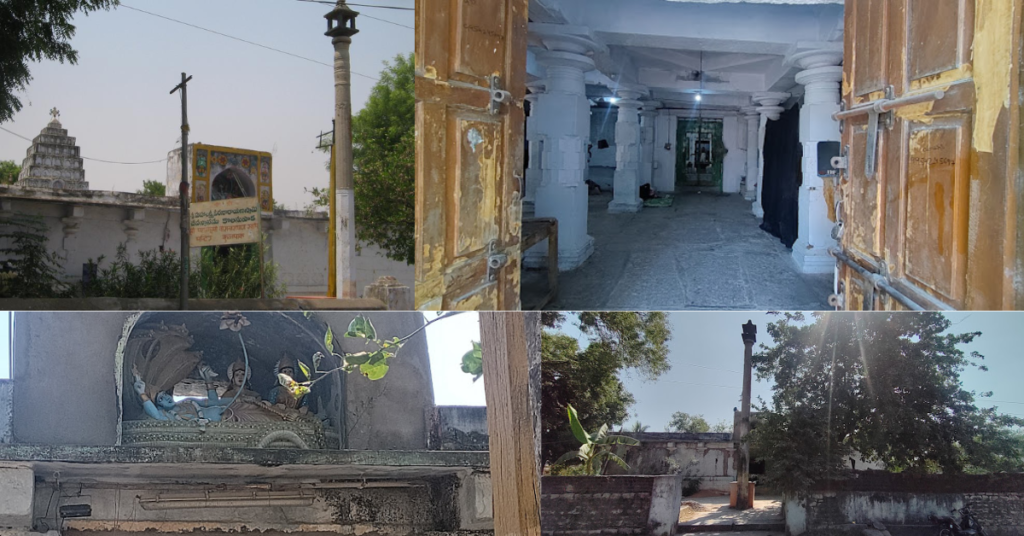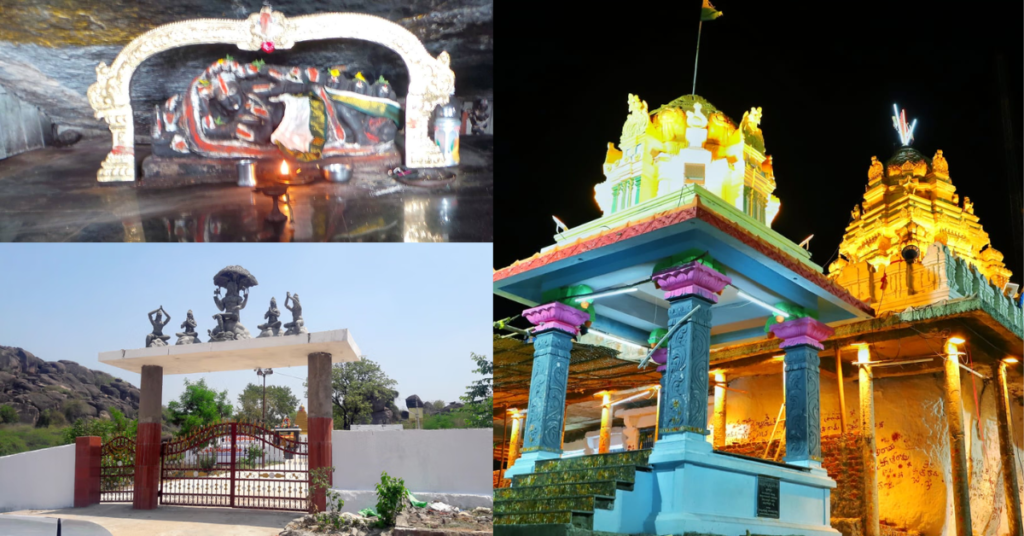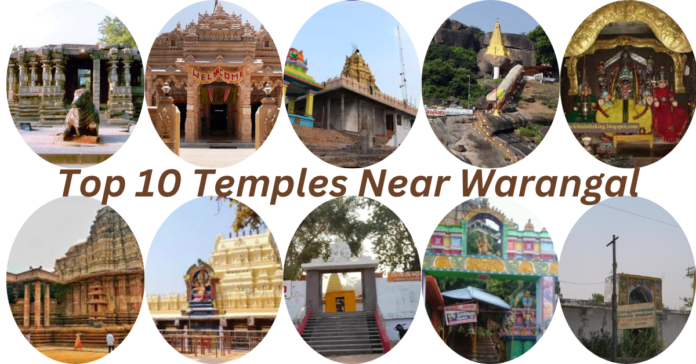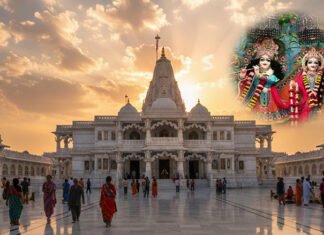Introduction
Warangal, a historic city in Telangana, India, is a treasure trove of ancient temples. Each is a testament to the grandeur of the Kakatiya dynasty and the rich cultural heritage of the region. These temples are not just places of worship but also intricate masterpieces of architecture and art, offering a glimpse into the spiritual and historical legacy of Warangal. From the iconic Thousand Pillar Temple to the serene Ramappa Temple. This guide explores the top ten temples near Warangal that are celebrated for their architectural brilliance, historical significance, and spiritual allure. Whether you’re a history enthusiast, a spiritual seeker, or simply a traveler eager to explore the depths of Indian heritage. These temples promise an enriching experience that bridges the past with the present.
1. Thousand Pillar Temple

The Thousand Pillar Temple, located in Hanamkonda, Warangal, is a masterpiece of Kakatiya architecture, constructed in 1163 AD by King Rudra Deva. This historic temple is dedicated to the Hindu Trinity Lord Shiva, Lord Vishnu, and Lord Surya. and is renowned for its star-shaped, triple-shrined structure.
The temple’s name is derived from its intricately carved pillars, which are a marvel of craftsmanship. It also features a monolithic Nandi, richly adorned ceilings, and an intricately designed mandapa (hall). The temple’s architecture reflects the sophisticated engineering and artistic skills of the Kakatiya dynasty, making it a significant monument in South India’s architectural history.
- Location: Hanamkonda, Warangal, Telangana.
- Timings: 6:00 AM – 8:00 PM.
2. Ramappa Temple

Ramappa Temple, also known as the Ramalingeswara Temple. It is an exquisite 13th-century temple located in Palampet, Mulugu district,. Constructed under the patronage of Recherla Rudra, a general of the Kakatiya king Ganapati Deva. Dedicated to Lord Shiva, the temple is a marvel of Kakatiya architecture, featuring intricate carvings and sculptures depicting Hindu mythology scenes.
The temple’s most unique feature is its roof made of lightweight, porous “floating bricks” that reduce the overall weight of the structure. The temple is supported by ornate pillars that are masterfully carved, each telling a story of the Kakatiya era. The temple is set within a lush landscape, surrounded by the serene Ramappa Lake, adding to its historical and spiritual significance. Recognized for its outstanding architectural brilliance, the Ramappa Temple was declared a UNESCO World Heritage Site in 2021.
- Location: Palampet, 77 km from Mulugu district, Telangana
- Timings: 6:00 AM – 6:00 PM.
3. Bhadrakali Temple

The Bhadrakali Temple in Warangal is one of the oldest and most revered shrines dedicated to Goddess Bhadrakali. Dating back to the 7th century and built by the Chalukya kings. Perched on a hilltop near the picturesque Bhadrakali Lake, the temple is a significant Shakti Peetha, symbolizing the Kakatiya dynasty’s devotion to the goddess.
The temple features a grand stone image of the goddess with eight arms, holding various weapons, symbolizing her power. The serene surroundings, coupled with the historical significance of the site, make it a popular pilgrimage destination. The temple complex also includes smaller shrines, a massive gateway, and a serene ambiance, attracting both devotees and tourists.
- Location: Near Bhadrakali Lake, Warangal, Telangana
- Timings: 5:30 AM – 1:00 PM and 3:00 PM – 8:00 PM.
4. Sri Veeranarayana Swamy Temple

Sri Veeranarayana Swamy Temple is located in Kolanupaka, Nalgonda District. It is a revered ancient temple dedicated to Lord Vishnu. It is believed to have been built during the Chalukya era. The temple is a stunning example of the architectural prowess of that era. The temple is adorned with intricate carvings and sculptures, which depict various mythological scenes and deities.
A unique feature of the temple is its sanctum sanctorum, where the idol of Lord Veeranarayana Swamy is enshrined, exuding a divine aura that attracts devotees from far and wide. The temple also showcases beautiful mandapams (pillared halls) and a majestic gopuram (tower), making it a significant religious and
- Location: Kolanupaka, 80 km from Nalgonda District, Telangana.
- Timings: 6:00 AM – 12:00 PM, 4:00 PM – 8:00 PM
5. Padmakshi Temple

The Padmakshi Temple, located in Hanamkonda, Warangal, is a 12th-century shrine dedicated to Goddess Padmakshi, revered for its Jain architectural influences. Originally a Jain temple, it was later transformed into a Hindu shrine during the Kakatiya dynasty. The temple is renowned for its unique location atop a hillock, which offers panoramic views of the surrounding area.
Its architecture features intricate carvings, including a notable sculpture of the goddess Padmakshi, and murals depicting various deities. The temple’s serene atmosphere and historical significance make it a prominent pilgrimage site, reflecting the blend of Jain and Hindu traditions in its design and worship practices.
- Location: Hanamkonda, Warangal, Telangana.
- Timings: 6:00 AM – 7:00 PM.
6. Sri Someshwara Laxmi Narasimha Swamy Temple

The Sri Someshwara Laxmi Narasimha Swamy Temple, located in Palakurthy, Jangaon district, near Warangal, is a historic Hindu shrine dedicated to Lord Shiva and Lord Vishnu. Built during the Kakatiya dynasty, this temple is renowned for its stunning Dravidian architecture. Which includes intricately carved pillars, elaborate sculptures, and detailed frescoes. The temple’s main sanctum houses a beautifully crafted Shiva Lingam, and the complex features a large courtyard with a well-maintained Nandi (bull) statue.
The temple’s architectural design reflects the artistic excellence of the Kakatiya period, making it an important cultural and religious site. Its serene atmosphere and rich heritage make it a significant destination for devotees and history enthusiasts alike
- Location: Palakurthy, Jangaon district
- Timings: 6:00 AM – 12:00 PM and 5:00 PM – 8:00 PM.
7. Inavolu Mallikarjuna Swamy Temple

The Inavolu Mallikarjuna Swamy Temple, situated in Inavolu, Warangal, is a revered ancient Hindu temple dedicated to Lord Shiva, known as Mallikarjuna Swamy. Built during the Kakatiya dynasty, this temple is renowned for its traditional Dravidian architecture and intricate carvings.
The temple features a striking central sanctum housing a Shiva Lingam, surrounded by richly decorated pillars and sculptures depicting various Hindu deities and mythological scenes. A major highlight of the temple is its annual Jatara (festival), which draws thousands of devotees and visitors from across the region. The temple’s serene ambiance, historical significance, and vibrant celebrations make it a prominent spiritual and cultural landmark in Warangal.
- Location: Inavolu, 20 km from Warangal, Telangana.
- Timings: 6:00 AM – 12:00 PM, 4:00 PM – 8:00 PM
8. Kolanupaka Jain Temple

The Kolanupaka Jain Temple is located in Kolanupaka Nalgonda District. near Warangal, is an ancient and revered pilgrimage site dedicated to Jainism. Dating back over 2,000 years, this temple is known for its intricate architecture and artistic carvings. It features a striking 1.5-meter-high statue of Lord Mahavira, as well as beautifully carved pillars and ornate sculptures that reflect the temple’s historical significance. The temple complex includes several smaller shrines and is renowned for its serene ambiance and historic importance, attracting devotees and tourists alike who come to admire its cultural and spiritual heritage.
- Location: Kolanupaka, 80 km from Warangal, Telangana.
- Timings: 5:00 AM – 7:00 PM
9. Siddeshwara Temple

The Siddeshwara Temple, located in the heart of Warangal, is a revered Hindu temple dedicated to Lord Shiva, also known as Siddeshwara or Siddheshwara. Built during the Kakatiya dynasty, the temple is renowned for its distinct Kakatiya architectural style, characterized by intricately carved pillars, elaborate sculptures, and a majestic vimana (tower) above the sanctum. The temple features a large Shiva Lingam and is set amidst serene surroundings, adding to its spiritual ambiance. Notable for its historical significance and artistic grandeur, the Siddeshwara Temple serves as a prominent pilgrimage site and a symbol of the region’s rich cultural heritage
- Location: Hanamkonda, Warangal, Telangana.
- Timings: 6:00 AM – 8:00 PM.
10. Govindarajula Gutta Temple

The Govindarajula Gutta Temple, situated in Hanamkonda, Warangal, is a revered shrine dedicated to Lord Venkateshwara, an incarnation of Lord Vishnu. Perched atop a small hillock, the temple is renowned for its serene ambiance and panoramic views of the surrounding landscape. The approach to the temple involves climbing a series of steps, which adds to the devotional experience.
The temple’s architecture is simple yet elegant, with a sanctum housing the main deity’s idol, adorned with traditional decorations. The temple is a popular pilgrimage site, particularly during special festivals, and provides a tranquil retreat for devotees seeking solace and spiritual connection.
- Location: Warangal, Telangana.
- Timings: 6:00 AM – 12:30 PM and 4:30 PM – 7:30 PM.
These temples not only showcase the rich heritage of Warangal but also reflect the architectural prowess of the Kakatiya and Chalukya dynasties.
Conclusion
Warangal, with its array of ancient temples, offers a unique journey through time, spirituality, and architectural brilliance. Each temple is a testament to the artistic and cultural zenith reached by the Kakatiya and Chalukya dynasties, encapsulating the essence of Indian heritage. Whether it’s the intricate carvings of the Thousand Pillar Temple, the UNESCO-recognized Ramappa Temple, or the serene surroundings of Bhadrakali Temple, these sacred sites provide more than just a spiritual experience—they are a window into the rich history and traditions of the region. Visiting these temples not only enriches your understanding of Warangal’s past but also offers a deep sense of connection to the spiritual and cultural fabric of India.
Frequently Asked Questions(FAQS)
A: The Thousand Pillar Temple is renowned for its intricate star-shaped, triple-shrined structure and elaborately carved pillars.
A: Ramappa Temple is significant for its exquisite Kakatiya architecture and was declared a UNESCO World Heritage Site in 2021.
A: The Padmakshi Temple in Warangal originally had Jain architectural influences before becoming a Hindu shrine.
A: The floating bricks in Ramappa Temple’s roof are lightweight, reducing the overall weight of the structure, and showcasing advanced engineering.
A: A 1.5-meter-high statue of Lord Mahavira can be found at the Kolanupaka Jain Temple.
A: The Govindarajula Gutta Temple in Hanamkonda, Warangal, offers panoramic views from its hillock location.











